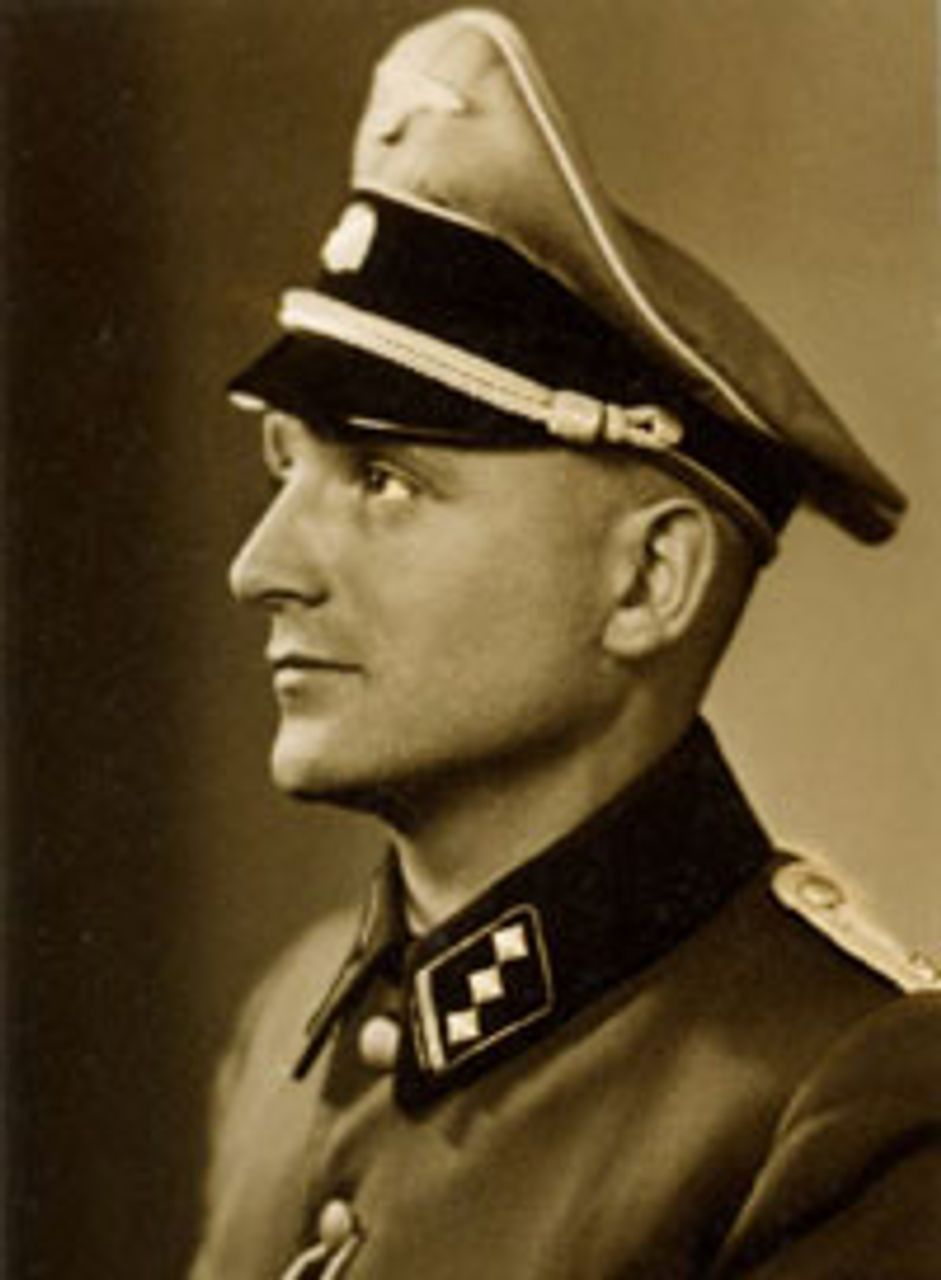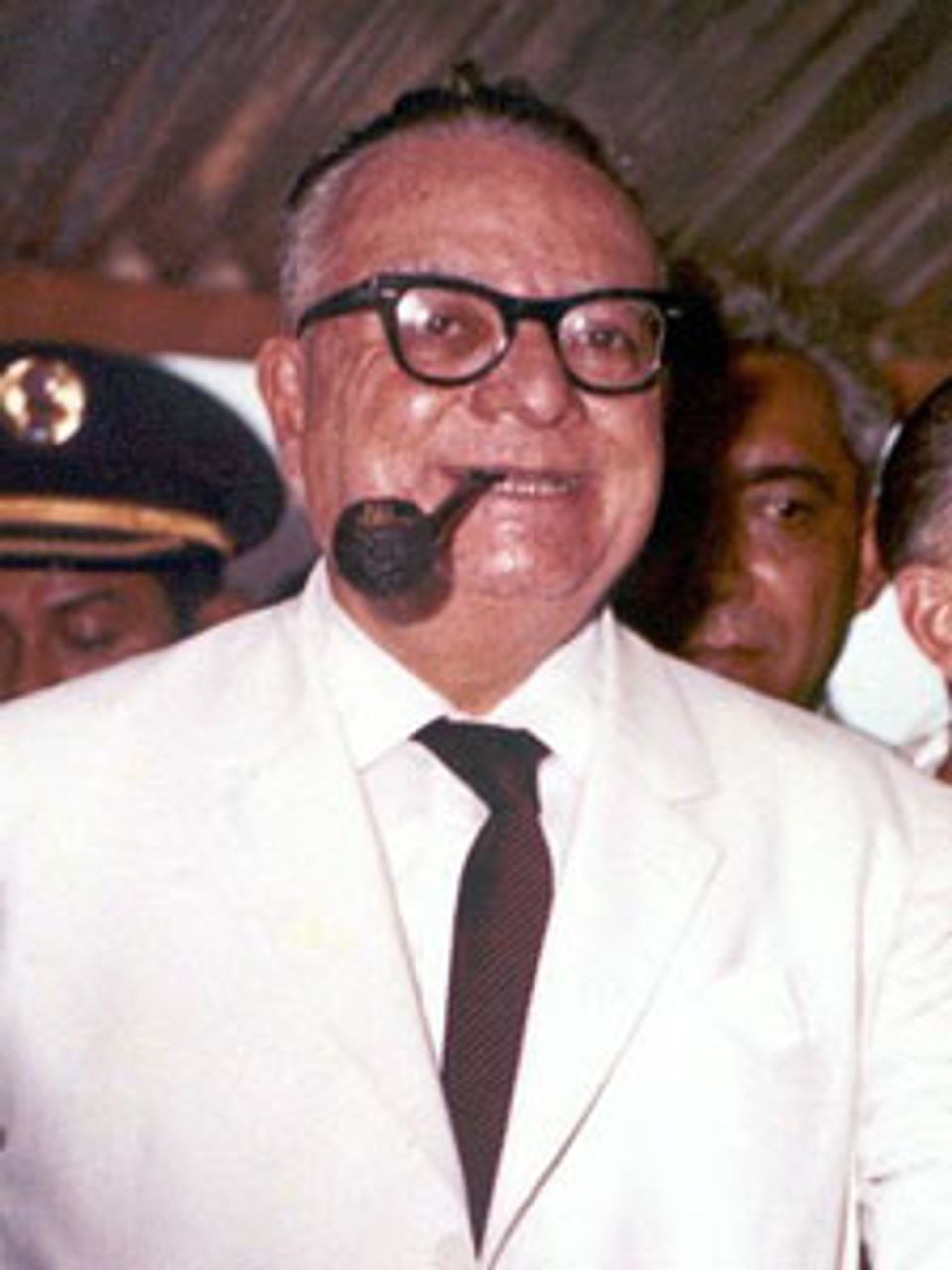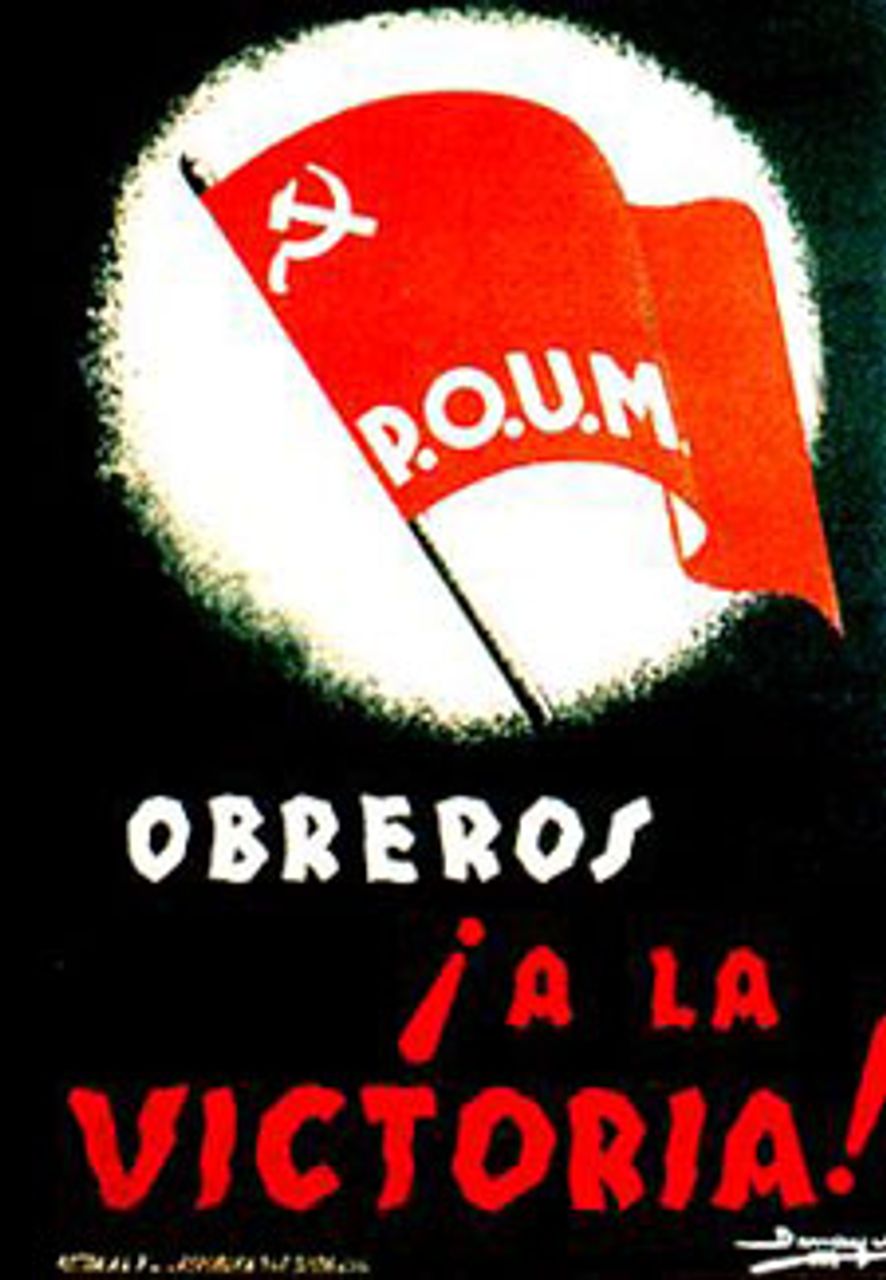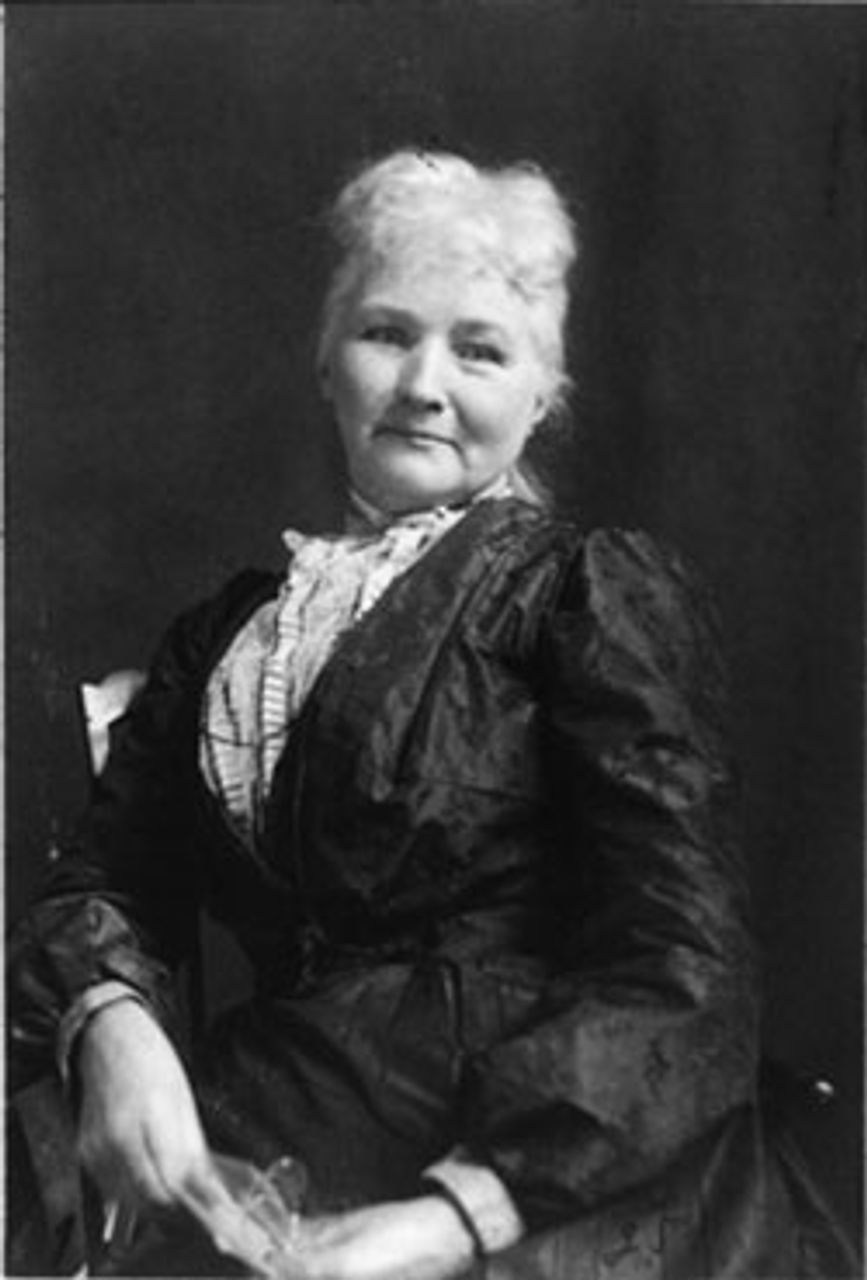This Week in History provides brief synopses of important historical events whose anniversaries fall this week.
25 Years Ago | 50 Years Ago | 75 Years Ago | 100 Years Ago
25 years ago: “Butcher of Lyon” on trial in France
 Klaus Barbie during World War II
Klaus Barbie during World War IIOn May 11, 1987, the trial of Klaus Barbie, the infamous “Butcher of Lyon,” began in the French city where during the World War II occupation, he was head of the Nazi Gestapo. A special courtroom which seated 700, with a bullet-proof glass enclosure for the defendant, was specially constructed for the trial of the Nazi mass murderer. Barbie was the number one war criminal in France from the years 1942-44. He was personally responsible for the execution of 4,000 Jews and ordered the deportation to death camps of 7,000 more.
In the basement of his headquarters in Montluc prison, which housed 15,000, Barbie hung dozens of Resistance fighters by their thumbs until they died. “His particular pleasure was to turn over a victim with the tip of his boot and then crush his face under his foot, particularly when he thought he recognized a Jew,” said one survivor. During interrogations, he was fond of using the whip and dogs. He would sometimes play the piano while his victims bled to death after torture.
After World War II ended, Barbie was recruited as an agent of the US Army Counter Intelligence Corps (CIC) by intelligence officer Robert Taylor, for espionage work against the Soviet Union. Taylor revealed to his superiors that Barbie was “wanted for war crimes” but decided that he would be a good intelligence source. As a sign of good faith, Barbie supplied Taylor with a written account of his1943 torture and murder of Resistance leader Jean Moulin.
The CIC operations chief in Germany opposed hiring Barbie and had him arrested, but the US refused to hold him and returned him to operations in Bavaria where he spied on the activities of the Communist Party. In 1949, after a Paris newspaper published an article entitled, “The Arrest of Barbie, Our Torturer,” the CIC dropped Barbie from their records, but kept him on as a paid informant. As demands grew for his extradition to France, the CIC claimed no knowledge of his whereabouts, then turned to the Vatican’s “rat line” to give him a new identity in Latin America.
Barbie lived as a free and wealthy man for 39 years, ultimately residing in Bolivia, where he assisted the right-wing operations of Latin American regimes and the US military. British documentary filmmaker Kevin Macdonald recorded interviews suggesting that Barbie was key in locating and executing Che Guevara.
Barbie was finally tracked down by Nazi-hunter Beate Klarsfeld in 1971 and successfully extradited to France in 1982. Barbie remained unrepentant, dying of leukemia four years after being sentenced to life in prison.
50 years ago: Venezuela crackdown on left
 Romulo Betancourt
Romulo BetancourtOn May 10, 1962, the Venezuelan government of Romulo Betancourt outlawed the Venezuelan Communist Party and the Movement of the Revolutionary Left, after the parties allegedly supported a failed military uprising that took place on May 4 in Carúpano. Over 1,000 were arrested. Three left-wing newspapers were shut down, and two of these had their presses destroyed. The government said it discovered “copious” amounts of weaponry in offices and homes.
Betancourt was viewed at the time as the most significant US ally in Latin America. In the estimation of the Kennedy administration, he offered a model “third way” between the left-nationalist forces attracted to Castroism—viewed as dangerous to US business interests— and the crude tin-pot dictators long backed by the US, such as Somoza in Nicaragua and Duvalier in Haiti.
The regime was weak. In three years Betancourt had survived three right-wing coups d'état and several working class revolts. The uprising in Carúpano, dubbed left-wing at the time, was led by nationalist military officers.
To whatever extent the VCP and MRL were involved in the military uprising—they officially denied involvement—it reflected the disastrous influence of Castroism on the Latin American left. The MRL, in particular, would embrace its illegality to take up the “armed struggle.” In reality the glorification of the armed struggle represented a rejection of the working class, the decisive social force in Venezuela and throughout Latin America.
75 years ago: Barcelona uprising betrayed
 A poster for POUM
A poster for POUMOn May 7, 1937 the bourgeois Republican government of Spain restored “law and order” to the streets of Barcelona, bringing to an end a powerful working class uprising that had culminated May 3 with workers routing an attempt by government Assault Guards to seize the main telephone exchange, then under workers’ control.
The workers were not defeated by government forces or an unwillingness to fight. They downed arms because they were exhorted to do so by their political leaders in the anarcho-syndicalist trade unions and by the POUM (Workers Party of Marxist Unification), a centrist organization headed by Andres Nin. Once a secretary to Leon Trotsky, the founder of the Fourth International, Nin and the other POUM leaders refused to follow Trotsky’s advice to consolidate the power workers held in their hands, establish a workers’ state, and carry through the socialist revolution as the only feasible way to defeat fascism.
A Times of London correspondent in Barcelona hailed the betrayals of the POUM and the anarchists. “Sanity and quiet returned here today with the public forces commanding the situation and the workers listening to their leaders’ voices, laying down their arms and returning to work,” the leading British bourgeois paper reported. “The Socialist and Syndicalist party leaders have agreed to forget the strike and bitterness and use all their efforts to pronounce workers unity.”
Trotsky’s position was very quickly vindicated. The Republican government was far more concerned with repressing the workers revolution than with defeating the fascists. As soon as the workers took down their barricades the government relocated two brigades, about 5,000 Assault Guards, from the Jamara front, critical in the defense of Madrid, to police Barcelona. This brought the total force in Barcelona to 12,000, even though the crucial industrial city of Bilbao was under heavy siege and only weeks from falling to Franco and the military.
The Republican government denounced the workers’ revolt, and branded the militant Barcelona workers as “enemies of the people,” ordering “the most severe investigation into their origins and execution.” Those found guilty would be punished “with all the majesty of the law.” In subsequent weeks the government would arrest the CNT and POUM leadership. The Stalinist killing machine would uphold its end of the bargain with the Republican government to stop workers revolting by abducting, torturing, and murdering Andres Nin and countless other anti-Stalinists.
100 years ago: Thugs attack striking miners in West Virginia
 Mary "Mother" Jones
Mary "Mother" JonesOn May 10, 1912, the Paint Creek strike, in the Kanawha coal field in West Virginia escalated, with hundreds of thugs hired by mining bosses attacking striking workers. The thugs, who worked for the Baldwin-Felts Detective Agency, notorious for its strikebreaking activities, were armed with rifles, shotguns and machineguns.
Striking workers who were evicted from their company homes, and forced to flee the armed thugs, lived in tents next to public highways.
The strike, which began on April 18, was precipitated by the refusal of the operators of the Paint Creek mine to sign a contract with the United Mine Workers of America (UMWA), the miners’ union, following the expiration of the previous contact at the beginning of April.
The UMWA demanded that the full union recognition, respect for the right of workers to assembly and free speech, the abolition of the practice of blacklisting discharged workers, and an end to compulsory trading at company stores. Other demands focused on regulations, including scales to weigh coal, and the right of workers to hire check-weighmen, which would prevent the mining companies paying workers less than they were due. Workers were paid according to the weight of coal they mined.
The Paint Creek strike, which lasted over a year, was an expression of a broader radicalization among mine workers and the working class as a whole. In an article on May 11, “Idle miners troublesome in the Anthracite regions,” the Wall Street Journal complained, “Representatives of the Industrial Workers of the World ... are in the field attempting to stir up the miners.” The Journal wrote that the IWW was attempting to “complicate matters and to prevent an immediate settlement of the difficulties between the men and the operators,” and expressed concern over rumors that the activities of the IWW would lead to a split within the UMWA against the union’s conservative leadership.
